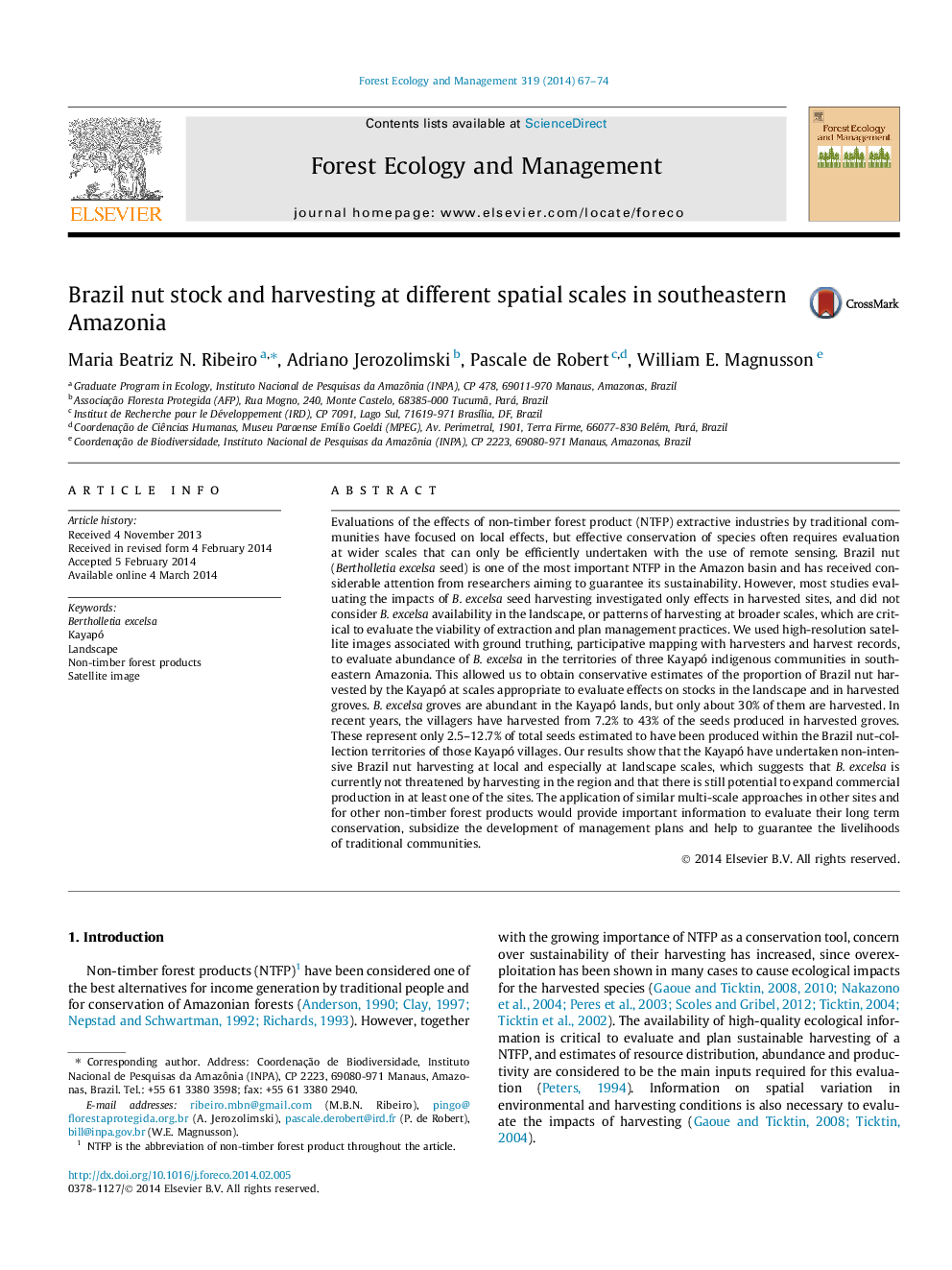| کد مقاله | کد نشریه | سال انتشار | مقاله انگلیسی | نسخه تمام متن |
|---|---|---|---|---|
| 86654 | 159202 | 2014 | 8 صفحه PDF | دانلود رایگان |
• We compare Brazil-nut stocks and harvest pressure at local and landscape scales.
• We use spatial data, participative mapping, ground truthing and harvest records.
• The proportion of Brazil nuts harvested is low in harvested groves and in the landscape.
• Harvest is non intensive in the study site and there is potential to expand production.
• The multi-scale approach provides key information to plan harvesting over wide areas.
Evaluations of the effects of non-timber forest product (NTFP) extractive industries by traditional communities have focused on local effects, but effective conservation of species often requires evaluation at wider scales that can only be efficiently undertaken with the use of remote sensing. Brazil nut (Bertholletia excelsa seed) is one of the most important NTFP in the Amazon basin and has received considerable attention from researchers aiming to guarantee its sustainability. However, most studies evaluating the impacts of B. excelsa seed harvesting investigated only effects in harvested sites, and did not consider B. excelsa availability in the landscape, or patterns of harvesting at broader scales, which are critical to evaluate the viability of extraction and plan management practices. We used high-resolution satellite images associated with ground truthing, participative mapping with harvesters and harvest records, to evaluate abundance of B. excelsa in the territories of three Kayapó indigenous communities in southeastern Amazonia. This allowed us to obtain conservative estimates of the proportion of Brazil nut harvested by the Kayapó at scales appropriate to evaluate effects on stocks in the landscape and in harvested groves. B. excelsa groves are abundant in the Kayapó lands, but only about 30% of them are harvested. In recent years, the villagers have harvested from 7.2% to 43% of the seeds produced in harvested groves. These represent only 2.5–12.7% of total seeds estimated to have been produced within the Brazil nut-collection territories of those Kayapó villages. Our results show that the Kayapó have undertaken non-intensive Brazil nut harvesting at local and especially at landscape scales, which suggests that B. excelsa is currently not threatened by harvesting in the region and that there is still potential to expand commercial production in at least one of the sites. The application of similar multi-scale approaches in other sites and for other non-timber forest products would provide important information to evaluate their long term conservation, subsidize the development of management plans and help to guarantee the livelihoods of traditional communities.
Journal: Forest Ecology and Management - Volume 319, 1 May 2014, Pages 67–74
